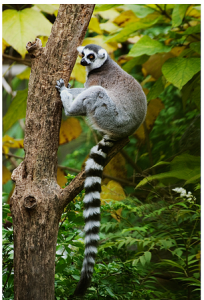Greater than 2 minutes, my friend!
Translators can climb using long tails
 Search Engine Optimization (SEO) is something all translators can do for their own website. You only need to select keywords based on the profile of your current and potential customers and place them in your page.
Search Engine Optimization (SEO) is something all translators can do for their own website. You only need to select keywords based on the profile of your current and potential customers and place them in your page.
Long Tails
In my previous posts, I gave some tips on how to research relevant keywords for website translation.
In order to start optimizing your own website, I suggest that you use long tail keyword phrases.
What is a long tail keyword phrase? I will illustrate it with an example.
Over 40,000 internet users in the UK type the search term “English to Spanish Translation” in Google every month; we can say that this term has high search volume, which means that many websites will compete to include it on their sites and rank number 1 in Google results.
Long tail keywords are unique queries that make up the majority of searches made by internet users. Sentences such as “urgent Spanish translation certified” or “creative translation of a brochure” are long tail keyword phrases that have low search volume; hence, it is less likely that many websites will compete to include them.
What is more important, someone looking for the creative translation of a brochure, rather than being performing a search out of curiosity, may have already decided to translate it, which means that this particular search will convert into a new sale for you!
Elements for keyword placement
The next step is to include your selected keywords in the following elements:
The head code and meta descriptions
This information is used by search engines to catalogue the site and includes:
The page title
The description
The Keywords
If you look at the source code of a web page, you should find something like this
<head><title> Creative Translation of Documents – The Moon Light </title>
<meta name=”description” content=” The Moon Light offers professional creative translation services of flyers and brochures. The quality is out of this world!”/>
<meta name=”keywords” content=”Spanish Translation, Creative Translation, Translation of Brochures…”/> </head>
If you want to make your website SEO friendly you will need to write different head codes and meta descriptions for each page of your site.
The page title
This is the title of the web page that users will see when browsing your site. For example: https://www.themoonlight.com/creative-translations
The source code should look like this:
<title> marketing-translation </title>
The first heading
The content of the paragraph
I advise you not to repeat keywords and phrases many times to avoid any penalties. As a rule, you should use the same keyword only twice on each of the above elements.
Your homework?
Find out what keywords are important for your website; you can simply ask your clients or fellow translators what terms they would use to search and find the services you are offering.
Set these SEO basics and your visibility will increase!
For more useful tips and guides, please follow the link to my website
http://www.trustyourbrand.co.uk/#!translation-blog/cpic
David García Ruiz
info@trustyourbrand.co.uk





Hi David, Thanks for sharing these tips. Very informative.
Thank you!
David, although I appreciate the need to make a technical subject easier to understand for non-savvy readers, there are various unclear sections in your article.
First of all, you talk about “The head code and meta descriptions”. The meta tags are in fact part of the HEAD section of the file and I would not call them META descriptions, because you then refer to both META Description and META Keywords. I also believe that you should have explained that from the point of view of ranking the META Keyword tag does not have any effect. As a matter of fact also the META Description is practically useless.
There are some other issues, but I would like to highlight one in particular, when you write that the TITLE tag could be: “marketing-translation”
Would you really write a TITLE like that?
Best, Andrea
You are awesome Andrea. Do not forget to smile today!
Sorry, you should have specified that you don’t accept critical remarks.
You can delete it if you like.
With a smile 🙂
Andrea
I am going to take the time to answer you.
“META Description is practically useless” FALSE: There are over 100 factor to make your site SEO friendly; this is one of them!
“marketing-translation” Would you really write a TITLE like that YES
I would not call them META descriptions, I CALL THEM META DESCRIPTIONS
there are various unclear sections in your article. FROM YOUR POINT OF VIEW
I hope you read this with a smile 🙂
David, I’m just highlighting some issues that I was concerned with. I thought you would accept my contribution with a smile 🙂
However, I will add some background info I believe our colleagues could be interested in.
With regard to META tags I suggest this article:
link to woodst.com
It explains how metatags have no real effect on ranking, but also that especially DESCRIPTION can be very useful in marketing terms, if well written.
I also suggest to read Google’s SEO Starter Guide
link to static.googleusercontent.com
(also available in other languages)
With regard to the TITLE tag, it is still a ranking factor and I personally consider it useful.
It is the first text you see in Google so it’s important for the users to understand what the page is about.
David wrote:
“This is the title of the web page that users will see when browsing your site. For example: link to themoonlight.com”
There is a little terminological confusion here as this is the URL, not the Title, but I agree that it is an important place to put your long tail keywords.